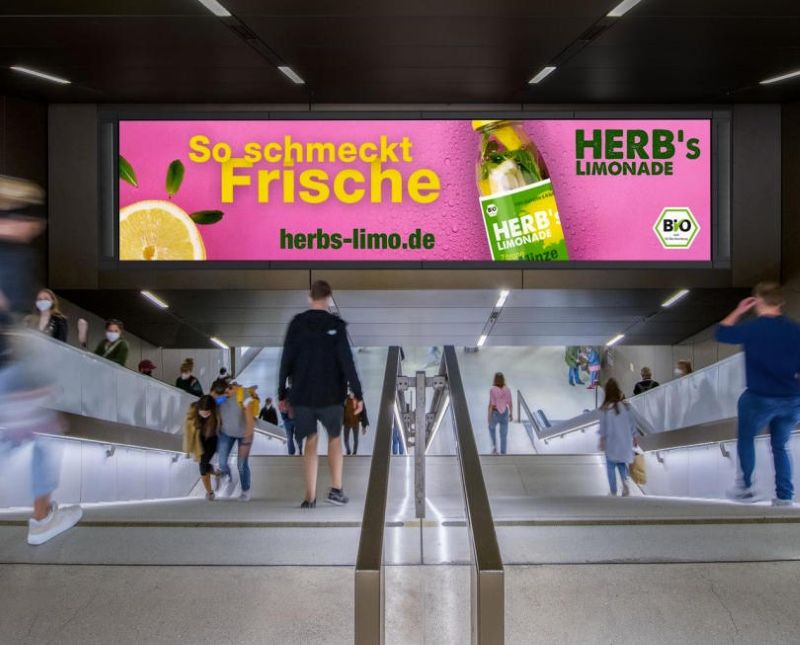Maximizing Your 2025 Subway Advertising Budget
2025-06-05Tianci MediaViews:81
Highlights
In 2025, subway advertising remains a cornerstone of urban marketing strategies, blending accessibility, high visibility, and targeted reach. With millions of daily commuters across global metro systems, brands are eager to leverage this space—but the question of cost looms large. How much does it truly cost to advertise in subway stations or on trains each day?
In 2025, subway advertising remains a cornerstone of urban marketing strategies, blending accessibility, high visibility, and targeted reach. With millions of daily commuters across global metro systems, brands are eager to leverage this space—but the question of cost looms large. How much does it truly cost to advertise in subway stations or on trains each day? This article dissects the factors influencing daily rates, provides actionable insights, and offers a roadmap for optimizing your 2025 subway advertising budget.

Key Factors Influencing Daily Subway Advertising Costs 💼
1. Geographic Location: Cities Drive Pricing 🌆
The cost of subway advertising varies dramatically by city. For example:
- New York City: Daily rates for prime subway ads (e.g., digital screens in Times Square stations) can exceed $1,200/day, thanks to high foot traffic and iconic landmarks.
- London: The London Underground’s premium digital ads cost £300–£600/day, with peak rates during rush hours.
Why the gap? Urban density, demographic targeting, and competition for ad space all play roles.
2. Ad Format & Size: Digital vs. Static 🖥️ vs. 🖼️
- Static posters: Lower-cost options (e.g., 50–200$/day in secondary markets) but limited flexibility.
- Digital screens: More expensive (often 300–1,000$+/day) but allow real-time updates and interactive campaigns.
- On-train ads: Placements inside carriages (e.g., seat covers, LED panels) cost 200–500$/day, depending on route popularity.

3. Contract Length & Negotiation 📋
Long-term contracts (e.g., 6+ months) often reduce daily rates by 15–30%. For instance, a 12-month digital ad campaign in Tokyo might drop from $12,000/day to $8,000/day.
Case Studies: Real-World Pricing Scenarios 📊
Case 1: A Startup’s Budget-Friendly Approach in Berlin 🚇
A Berlin-based tech startup aimed to promote a new app. They opted for static posters in 10 mid-tier stations, securing a 9-month contract at €150/day (total: €40,500). The campaign reached 1.2 million commuters monthly, yielding a 20% conversion rate.
Case 2: Luxury Brand’s High-End Digital Campaign in Paris 🌟
A luxury watch brand chose digital screens in Paris’s Châtelet-Les Halles station, paying €450/day for 6 months. The dynamic ads, paired with QR codes, drove $2.5 million in sales within 6 months—a ROI of 400%.
2025 Trends Shaping Subway Advertising Costs 🚀
1. Tech Integration: AR & AI-Powered Ads
Emerging technologies like augmented reality (AR) and AI-driven audience targeting are pushing costs upward. For example, an AR-enabled subway ad in Singapore might cost $1,500/day, but offers unparalleled engagement metrics.
2. Sustainability Demands
Cities like Amsterdam now mandate eco-friendly materials for ads, adding 50–100$/day to production costs. Brands must balance ethics with budgets.
3. Dynamic Pricing Algorithms
Some metro systems (e.g., Tokyo’s JR East) use AI to adjust rates hourly based on commuter traffic. A peak-hour ad might cost 20–30% more than off-peak slots.

How to Calculate Your 2025 Subway Advertising Budget 🧮
Step 1: Define Objectives
- Brand awareness? Target a high-traffic location.
- Direct sales? Pair ads with QR codes or geofencing.
Step 2: Prioritize Flexibility
Opt for monthly contracts instead of daily bookings to avoid price volatility.
Step 3: Leverage Data
Track metrics like dwell time and click-through rates (CTR). A CTR of 1.5–2% is average; aim higher!
Final Recommendations: Maximize Impact Without Breaking the Bank 💡
- Hybrid Campaigns: Combine static posters (for cost efficiency) with digital ads in key stations.
- Off-Peak Timing: Run ads during weekdays (not weekends) to save 10–15% daily.
- Partnerships: Collaborate with local transit authorities for co-branded campaigns, reducing costs by 25%+.
Conclusion: The Future of Subway Advertising is Bright (and Affordable!) 🌟
While daily subway advertising costs vary widely, strategic planning can turn these spaces into goldmines. By understanding geographic nuances, embracing tech, and negotiating smartly, brands can secure prime placements without overspending.
Ready to dive in? Start by mapping your target audience’s commute routes—and remember: subway advertising isn’t just about visibility; it’s about leaving a lasting impression.











